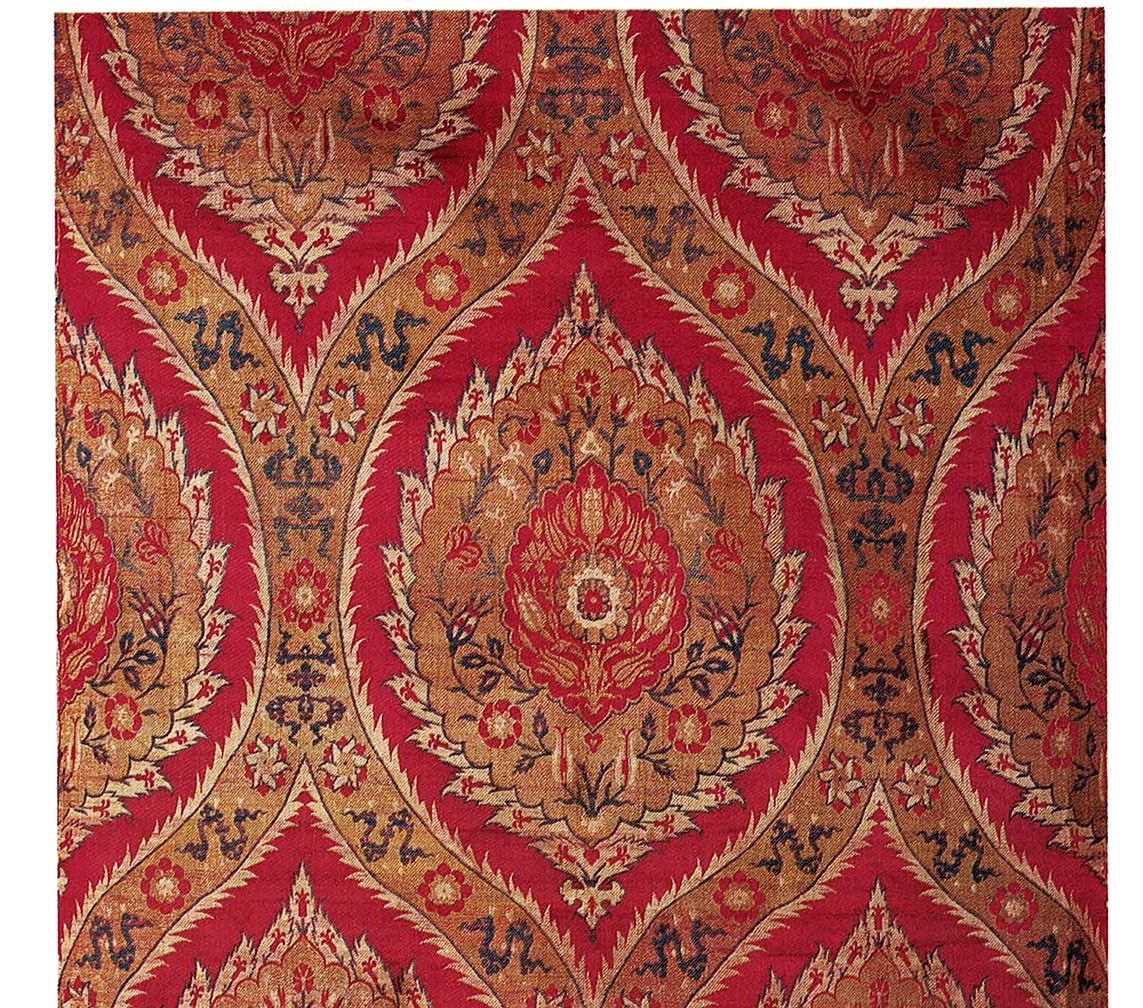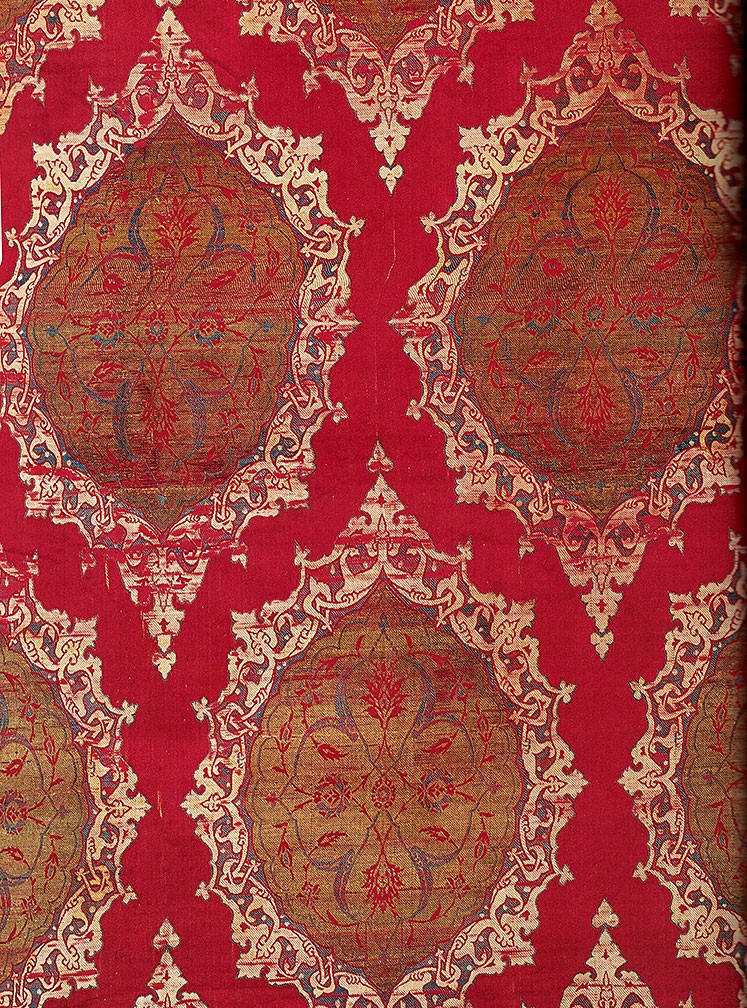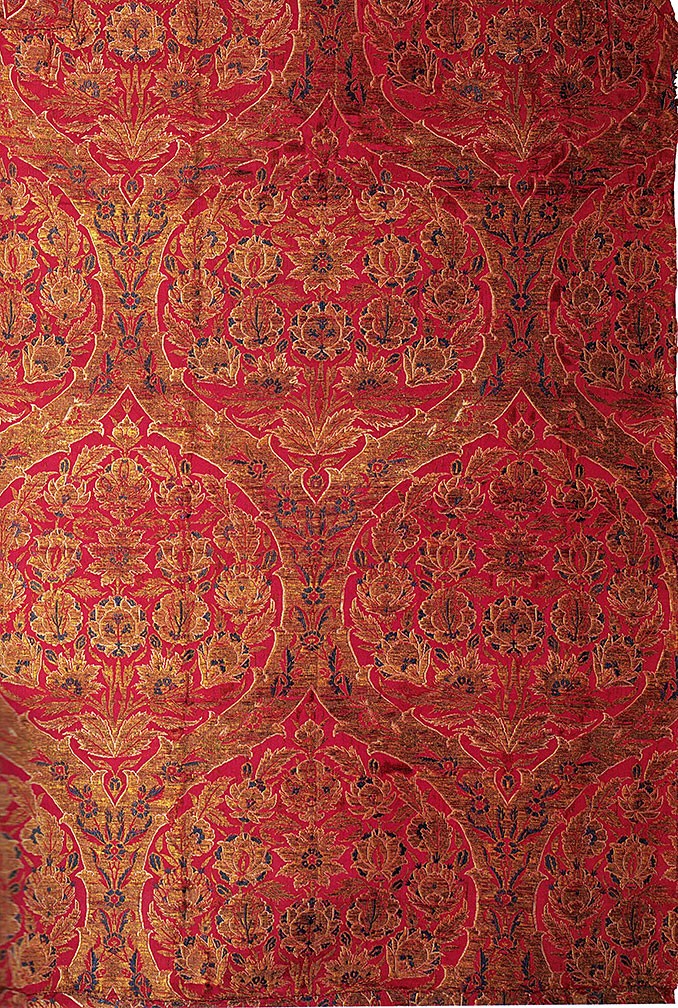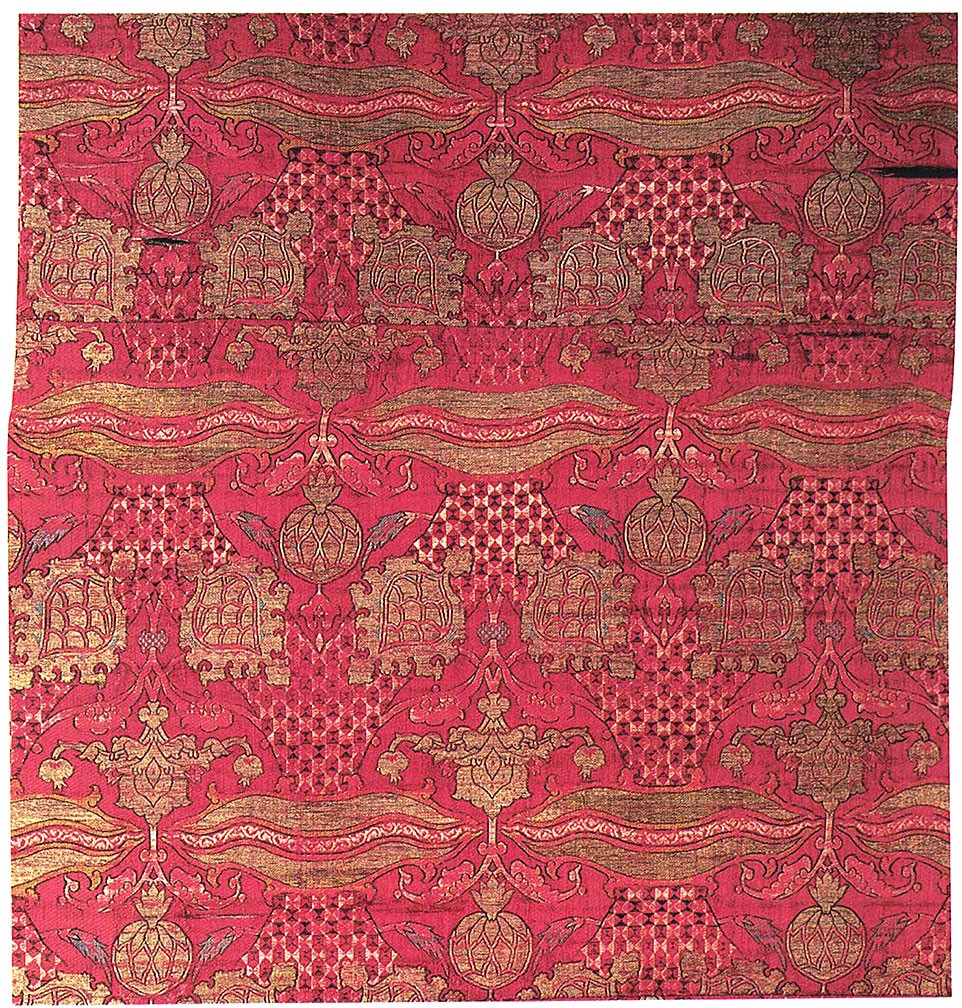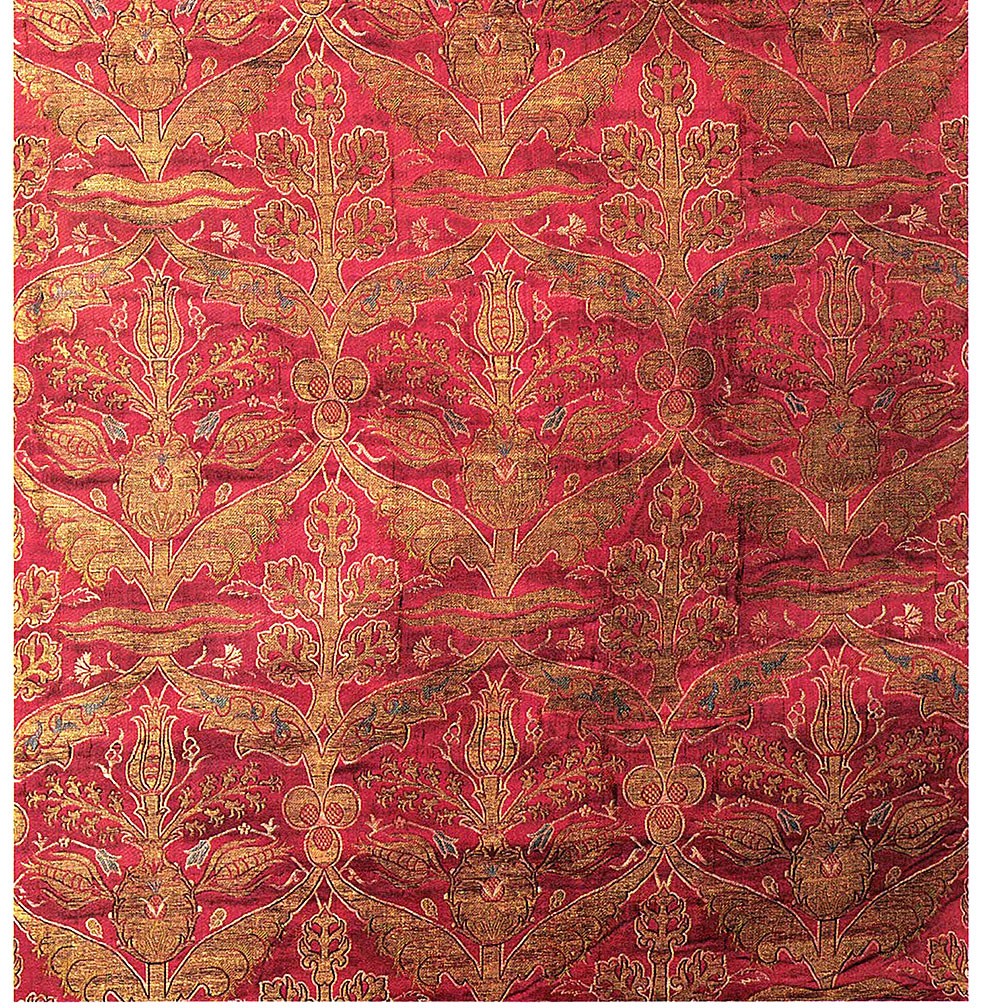Oriental Rugs Dictionary
Ottoman Kemha
The geographical situation of Ottoman territory has always made it a natural trade route for merchants plying between the East and West, and from the very earliest times Bursa has remained a lively center of trade and commerce. Textiles were given great importance in the Ottoman court and were registered as belonging to the treasury. The demand by members of the court for luxury fabrics was an influential factor in the increase in production and rise in quality. The Ottoman kemha fabric known to westerners as “brocade”, was also very popular abroad. It was a silk fabric with a double ground very often with an admixture of wire thread. In the 16th century, orders were placed for this type of fabric for use in papal robes and the ceremonial apparel worn by the imperial entourage. Papal costumes made from Ottoman brocades are found in museums and church treasuries. There were large numbers of kemha and catma weaving workshops in both Istanbul and Bursa, and a plan of a workshop specializing in the production of these particular fabrics is found in the palace archives.
